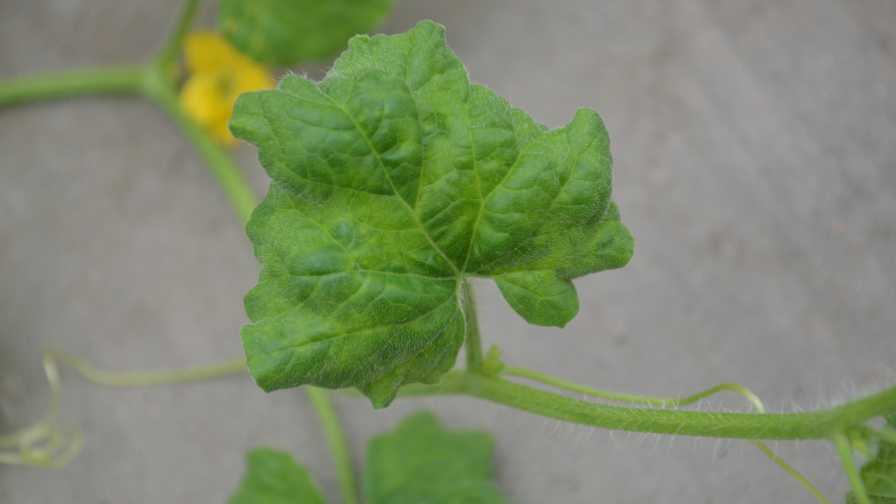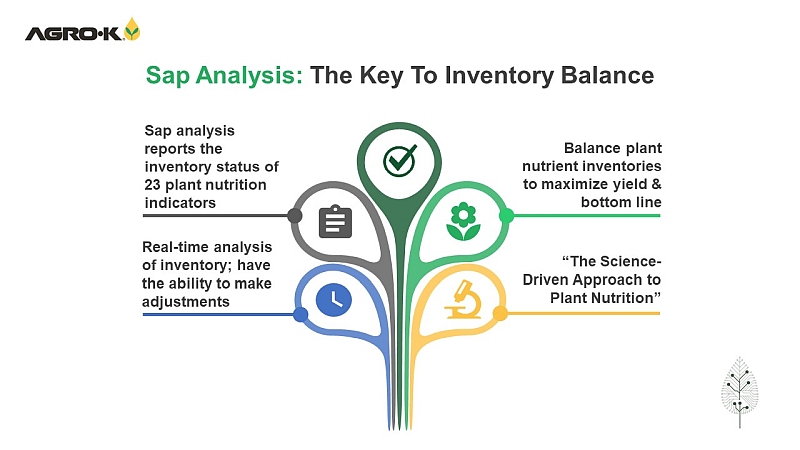What it Takes to Conquer Cucumber Mosaic Virus

Cucumber mosaic virus is an occasional problem in Florida on tomatoes, pepper, cucurbits and other vegetables. The virus has a worldwide distribution and was first found in cucumbers.
Photo courtesy of Robert Gilbertson, University of California, Davis
The first symptom of cucumber mosaic virus (CMV) is often clearing of veins, followed by development of mottling consisting of irregularly shaped, dark-green areas alternating with light-green or yellow areas. On many species, CMV shows symptoms on leaves known as “shoestringing,” which causes young leaves to appear narrow and the entire plant to be stunted.
On tomatoes, symptoms can be spectacular with a “shoestring” appearance of the leaves. The internodes are shortened, and the plants appear bushy and markedly stunted. Leaves are extremely deformed and have a green mosaic pattern. Infected fruit exhibit white-to-yellow rings, areas, or v-shaped line patterns and can resemble tomato spotted wilt virus.
Cucumbers can be infected at any stage. A light- to dark-green mosaic or mottling appears first on the youngest leaves. New leaves are stunted and distorted with the edges curling downward. Plants are stunted, sometimes severely, with shortened internodes resulting in a bushy canopy. Fruits are often wrinkled and misshapen and may appear gray. This appearance often leads to cucumbers being referred to as “white pickles.”
CMV in peppers causes slightly different symptoms. Pepper plants often have severe foliar damage, shown as mosaic and necrotic rings. The pods are often misshapen and display chlorotic rings and spots.
Survival and Spread
CMV spreads easily and can cause severe damage. There is often a loss of 10% to 20% of yield and, even if harvested, crops are commonly in poor condition.
CMV has one of the widest host ranges of any known plant virus.
CMV can be transmitted mechanically by sap and by more than 60 different aphid species. The virus often appears following cool conditions that favor aphid flights. Unlike TMV (tobacco mosaic virus), CMV is not seedborne in tomato and does not persist in plant debris in the soil or on workers’ hands or clothing.
Management
The occurrence of this virus is erratic and unpredictable; consequently, control of this disease can be difficult.
The use of resistant varieties is an important tool for growers when available. Commercial varieties of peppers, cucumber, and squash with resistance are available.
In studies, silver reflective plastic mulches have been shown to be effective in repelling aphids, reducing or delaying virus infection.
Removing weeds and diseased plants from fields also can help reduce the chance of infections.
Use of insecticides to control the aphids is often not effective in controlling CMV because of the short acquisition and inoculation time, and the fact that insecticides may cause aphids to become irritated and move from plant to plant increasing in field transmission.
Crop oils and insecticides that inhibit feeding activity may interfere with virus transmission.










